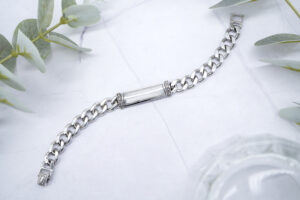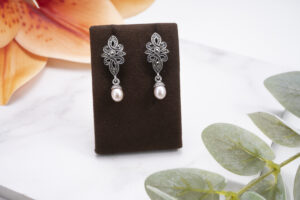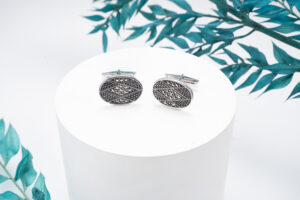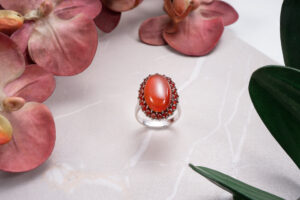Pricing jewelry is part art, part science. Price too high, and you risk losing sales to competitors. Price too low, and you undercut your own margins and brand perception. The challenge lies in striking the right balance ensuring strong profitability while remaining competitive in a saturated marketplace.
Here’s a comprehensive guide on how to strategically price your jewelry so it sells well, covers your costs, and reflects the true value of your brand.
How to Price Jewelry for Profit Without Losing Competitiveness
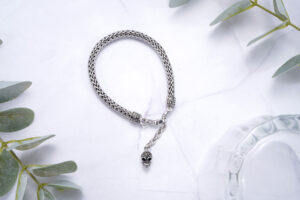
Understand Your Costs in Detail
Before setting any price, you must have a full breakdown of costs.Does stainless steel turn skin green
Direct Costs:
- Materials: metals, gemstones, findings, packaging
- Labor: production, quality control, polishing, setting
- Manufacturing fees or factory rates (especially for OEM orders)
Indirect Costs:
- Design and development (CAD, prototyping)
- Marketing and branding (photoshoots, influencer campaigns)
- Logistics (shipping, insurance, customs duties)
Formula Base:
Total Cost = Direct + Indirect Costs
Choose a Strategic Pricing Model
There are multiple methods to price jewelry, depending on your goals.
Keystone Markup (Common Retail Formula):
Wholesale Price = Cost x 2
Retail Price = Wholesale x 2
Example: If a ring costs $30 to produce
- Wholesale: $60
- Retail: $120
Tiered Markup:
Apply different markups by product type:
- Fashion jewelry: 3–5x
- Fine jewelry: 2–3x
- Custom/personalized: 4–6x due to perceived exclusivity
Psychological Pricing:
- Use $99 instead of $100 to create perceived value
- Bundle items into sets to increase average order value
Factor in Your Brand Positioning
Your price reflects your brand.
- Luxury brands can charge higher due to craftsmanship and perception
- Mass-market brands must remain price-sensitive
Ask:
- Is your brand premium, accessible luxury, or fast fashion?
- Do your materials and craftsmanship support your pricing?
Consistency is key. Avoid underpricing if your brand image relies on quality.
Benchmark Against Competitors
Research 5–10 direct competitors:
- What do they charge for similar materials and styles?
- Are they offering free shipping, returns, or loyalty programs?
- Are their products handmade, branded, or mass-produced?
Use competitor pricing to:
- Position your collection intentionally
- Spot gaps in the market
- Avoid pricing yourself out of your niche
Build in Promotional Flexibility
Don’t price your products so tightly that you can’t offer discounts.
- Include 10–20% margin buffer for holiday sales or promotions
- Set a “retail anchor” price and offer seasonal markdowns
- Bundle slow-moving inventory with top-sellers
This flexibility boosts revenue without hurting your brand value.
Use Perceived Value to Guide Premium Pricing
Consumers often pay more for:
- Branded packaging and unboxing experience
- Storytelling and design inspiration
- Personalization or limited editions
Tip:
Showcase craftsmanship, ethical sourcing, or unique gemstones to justify higher prices.
Perceived value = emotional benefit + product story + presentation
Test and Adjust Based on Real Data
Track product performance by:
- Sell-through rate
- Cart abandonment (on high-priced items)
- Conversion rates across collections
If an item isn’t moving:
- Review photos, descriptions, and pricing logic
- A/B test new pricing or introduce bundles
Use feedback to iterate. Pricing isn’t permanent—it evolves with your market.
Consider Wholesale and Retail Balance
If you sell B2B and B2C:
- Ensure your retail price is at least double your wholesale price
- Avoid undercutting your retail partners
- Offer different SKUs or packaging for wholesale vs. direct-to-consumer
Protect your channel relationships by maintaining pricing integrity.
Build a Profit-First Culture
Always consider your profit margin as non-negotiable.
- Know your minimum acceptable margin (e.g., 60%)
- Say no to partnerships that pressure you into loss-leader pricing
- Focus on high-margin SKUs for growth
Reminder: Sustainable pricing creates sustainable businesses.
Price with Purpose
Your jewelry isn’t just metal and stones it’s design, emotion, and value.
Pricing is a signal to your audience. It communicates quality, intention, and brand positioning. Set it strategically. Adjust it confidently.
Because when you price with purpose, you don’t just cover your costs.You grow your business and elevate your brand.

